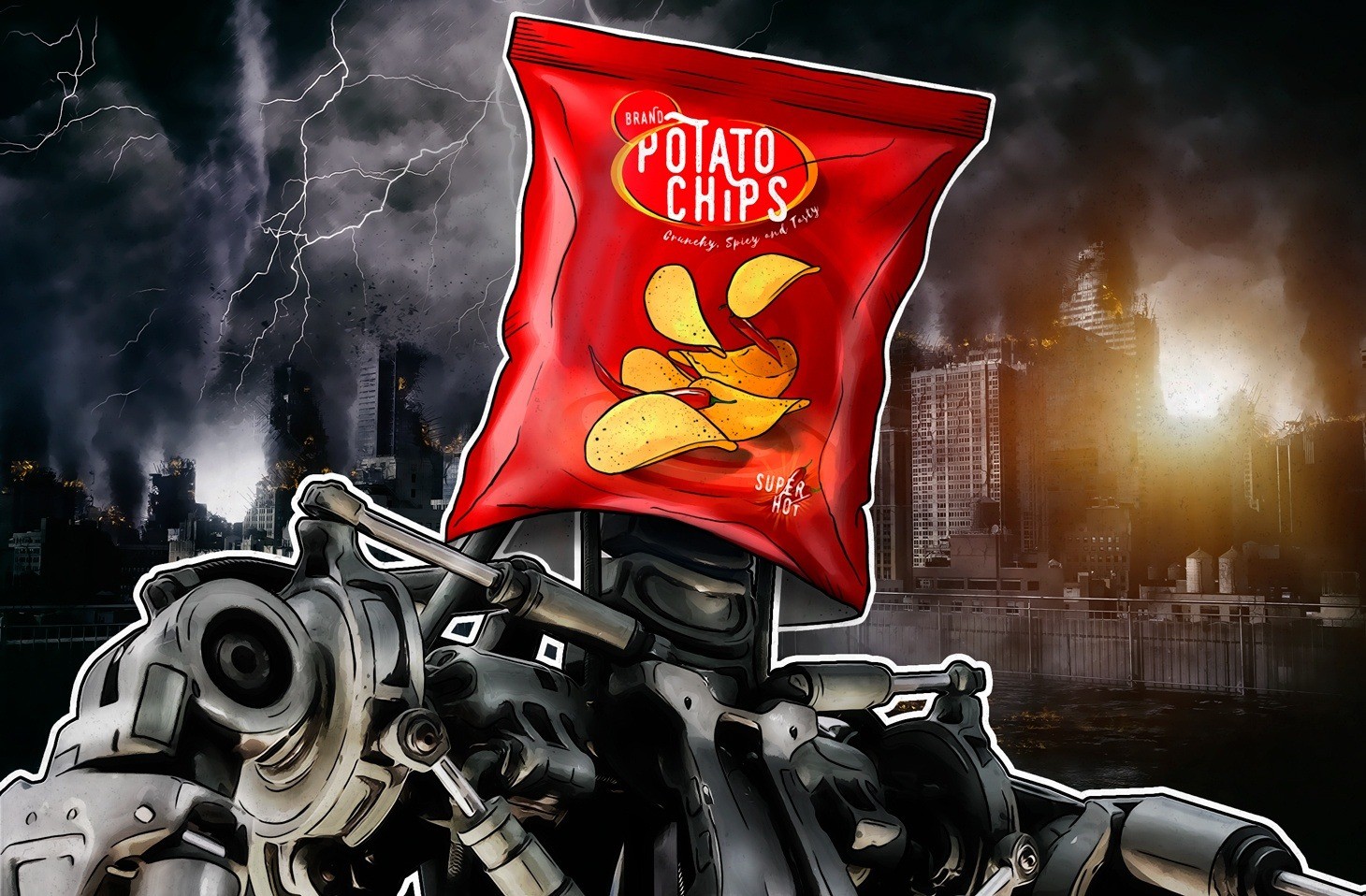By the time this post goes online, Terminator: Dark Fate will have hit movie theaters worldwide. The creators of the film decided against giving it a version number, but it is the sixth movie in the franchise and completely discards the plots of the last three, so we’ll call it Terminator 6/3. In terms of practical information security, it contains only one real moment of interest: when the understandably paranoid Sarah Connor attempts to evade cell-phone tracking.
The thing is that Sarah, who has problems with the authorities in several (more precisely, all 50) U.S. states, carries her phone in an empty bag of potato chips. Her rationale for doing so is that the foil supposedly blocks the phone’s GPS signal. Does it really? We decided to test this method.
How cell-phone tracking actually works
We’ll discuss the results of our potato chip bag experiment a bit further down, but first let’s figure out the principles of how cell-phone tracking works. For sufferers of acute paranoia, the first thing to note is that the simpler your device, the sounder you will sleep. Sarah Connor’s best bet would have been to use an old phone with no GPS or Wi-Fi at all (and ideally even without packet data transfer, aka GPRS).
Modern smartphones determine their location by several means: GPS satellite signals, the nearest cell towers, and Wi-Fi access points. The more technologies at play, the more accurate the coordinates.
GPS per se is nothing to fear — it allows the phone to receive signals to determine where it is, but it doesn’t transmit anything. Cell towers can also get a fix on a phone’s location, but not with great accuracy. Specific GPS coordinates can be transmitted to the outside world either by the device’s operating system or by various applications, but for that, Internet access is required. So basically, to hide from tracking, it’s not so much GPS that needs jamming, rather the cellular network and Wi-Fi.
Returning to the bag of chips, it cannot be said that Sarah Connor invented the wheel, more like reinvented it. The trick is based on the Faraday cage principle, which was first demonstrated 183 years ago. In theory, it should screen all wireless signals: Wi-Fi, GPS, and cellular alike.
Incidentally, even the use of a bag of chips as a Faraday cage is nothing new: More than 20 years ago, Gene Hackman’s character in Enemy of the State pulled off the technique. But communication technologies are forever improving, and aluminum is getting more expensive, who knows if modern bags can effectively shield the radio signals of today’s standards. That’s why we decided to put Sarah Connor’s method to the test.
Experiment: Does a potato chip bag protect against tracking?
As the test tool, we used the Kaspersky Safe Kids application. This app can provide a child’s precise location, and determine whether the cellular network, GPS, and Wi-Fi are up and running on a phone.
We installed the application on the test device in child mode, enabled Internet access on it via 4G, and went for a walk around the office. Beforehand, we bought (and ate) several bags of chips, as well as a couple of tin boxes of cookies of different shapes. We then tried to use the packages to block the signal.
First piece of advice, don’t bother with cookie tins. It’s too hard to predict which will be effective: Some reliably jammed any signal, but others shook off GPS satellites only, and only indoors, where the signal is weak anyway.
Potato chip bags were more promising — although not from the start. First, we stuffed the device into one bag and confirmed it had no effect at all. The coordinates were determined to an accuracy of just a couple of meters. So, initially, we were worried about Sarah’s safety. But then we had the idea of making multilayered protection out of two chip bags. It turned out that the double-shielding did indeed prevent the phone from receiving and transmitting signals!
To be sure, we tested several bags made by different producers. The result was the same: Two bags work, one bag doesn’t. Perhaps Sarah’s chip bag was made by a company with foil to spare, so that one layer was in fact all she needed. But if you’re a paranoid realist, we recommend using at least two bags — or even three.
The experiment results: Tin boxes are unreliable. Two bags work, one bag doesn’t.
Keep in mind that if you want to make a call, however quick, you’ll have to remove the phone from its chip-bag armor, which will give it time to transmit its GPS coordinates to the network and at the very least will have its approximate location triangulated by cell towers. As Carl (the drapery shop owner) suggests in the movie, If you’re gonna keep your phone in a bag of chips, then keep your phone in a bag of chips.
Terminator 6/3: Besides chips
Aside from bags of chips, the new Terminator has nothing to say about cybersecurity. Sure, cyborgs break into a police database, a border guard computer system, and a cellular company’s network. But from a practical perspective, these hacks are of no interest — they do not occur as a result of specified system design flaws, but simply because the cyborgs use undetermined futuristic methods to defeat modern technology: in a word, technomagic.
Read our cyberdissection of the previous two movies in the series (in the new version of the timeline) in our post called “The cybersecurity of the Terminator“.
 truth
truth

 Tips
Tips